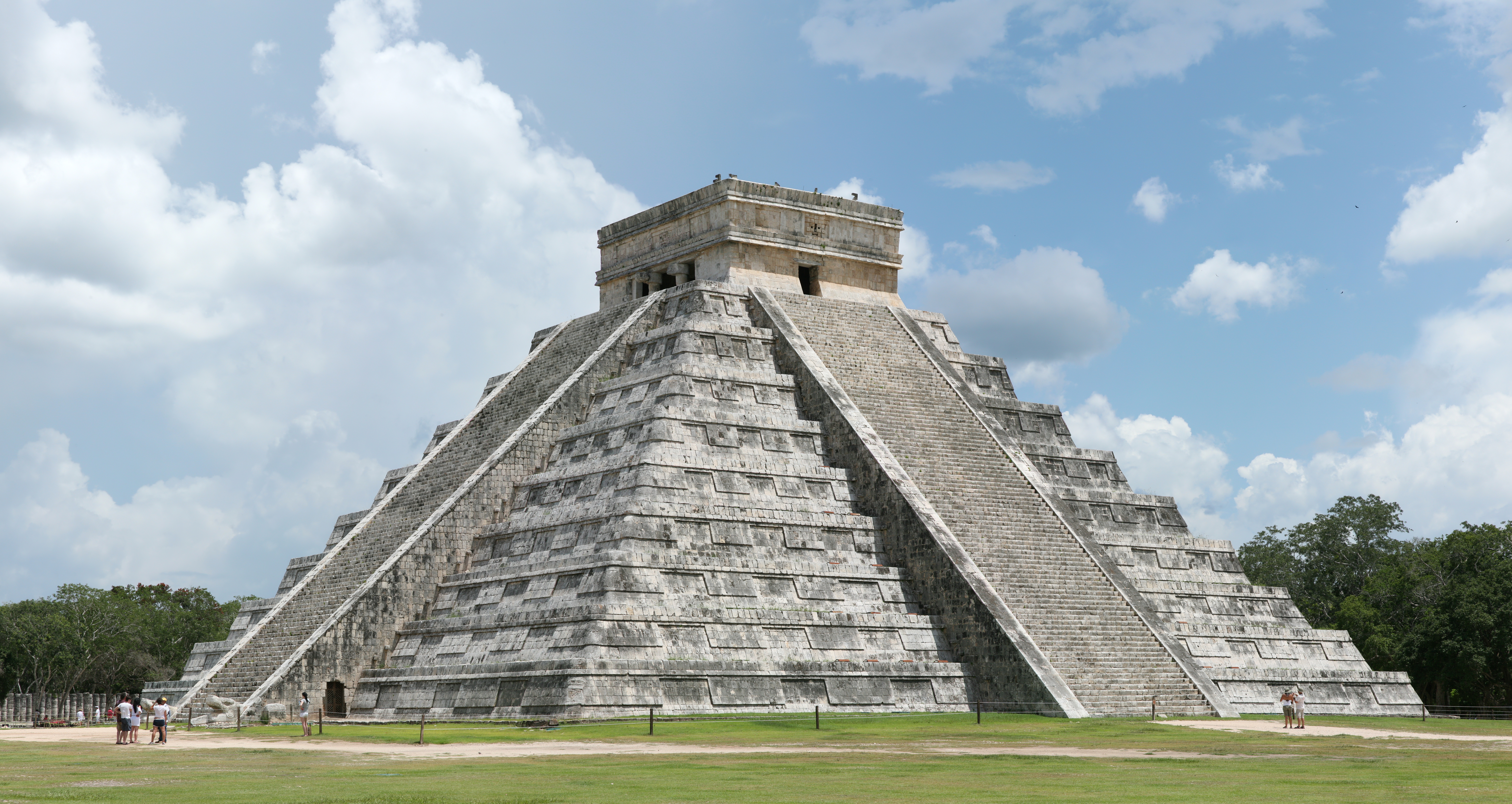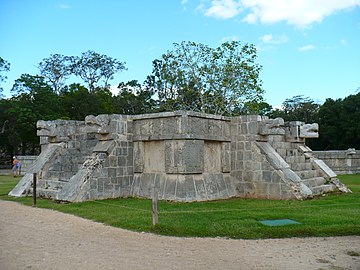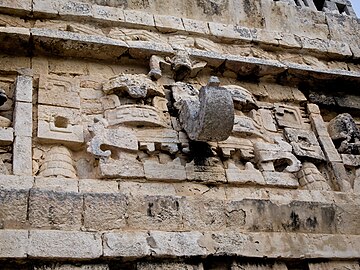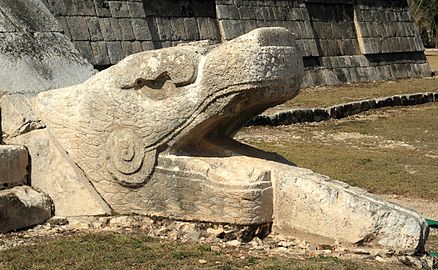
Chichen Itza
Chichén Itzá[nb 1] (often spelled Chichen Itza in English and traditional Yucatec Maya) was a large pre-Columbian city built by the Maya people of the Terminal Classic period. The archeological site is located in Tinúm Municipality, Yucatán State, Mexico.[1]
For the station, see Chichén Itzá railway station.Location
Late Classic to Early Postclassic
Pre-Hispanic City of Chichen-Itza
Cultural
i, ii, iii
1988 (12th session)
Chichén Itzá was a major focal point in the Northern Maya Lowlands from the Late Classic (c. AD 600–900) through the Terminal Classic (c. AD 800–900) and into the early portion of the Postclassic period (c. AD 900–1200). The site exhibits a multitude of architectural styles, reminiscent of styles seen in central Mexico and of the Puuc and Chenes styles of the Northern Maya lowlands. The presence of central Mexican styles was once thought to have been representative of direct migration or even conquest from central Mexico, but most contemporary interpretations view the presence of these non-Maya styles more as the result of cultural diffusion.
Chichén Itzá was one of the largest Maya cities and it was likely to have been one of the mythical great cities, or Tollans, referred to in later Mesoamerican literature.[2] The city may have had the most diverse population in the Maya world, a factor that could have contributed to the variety of architectural styles at the site.[3]
The ruins of Chichén Itzá are federal property, and the site's stewardship is maintained by Mexico's Instituto Nacional de Antropología e Historia (National Institute of Anthropology and History). The land under the monuments had been privately owned until 29 March 2010, when it was purchased by the state of Yucatán.[nb 2]
Chichén Itzá is one of the most visited archeological sites in Mexico with over 2.6 million tourists in 2017.[4]
Economy
Chichén Itzá was a major economic power in the northern Maya lowlands during its apogee.[16] Participating in the water-borne circum-peninsular trade route through its port site of Isla Cerritos on the north coast,[17] Chichen Itza was able to obtain locally unavailable resources from distant areas such as obsidian from central Mexico and gold from southern Central America.
Between AD 900 and 1050 Chichen Itza expanded to become a powerful regional capital controlling north and central Yucatán. It established Isla Cerritos as a trading port.[18]








![Las Monjas (Chichen Itza) in 1843 by Frederick Catherwood.[81]](http://upload.wikimedia.org/wikipedia/commons/thumb/a/ae/Brooklyn_Museum_-_Las_Monjas_Chichen_Itza_Yucatan_-_Frederick_Catherwood.jpg/372px-Brooklyn_Museum_-_Las_Monjas_Chichen_Itza_Yucatan_-_Frederick_Catherwood.jpg)